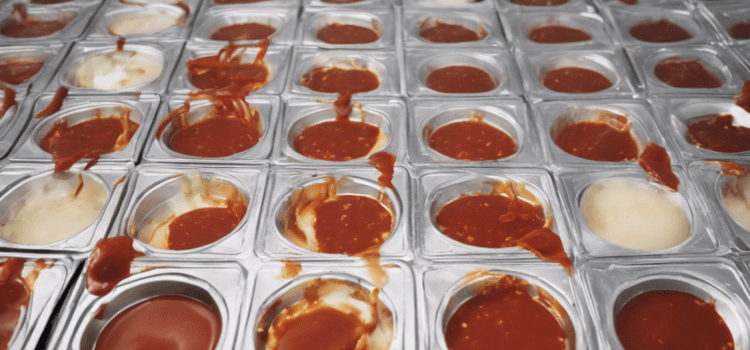When it comes to educational institutions in Himachal Pradesh, the Himachal Pradesh Board of School Education (HP BOSE) stands out as a pivotal organization responsible for regulating and supervising the education policies in the state. Established in 1969, the HP BOSE has been instrumental in improving the quality of education and ensuring smooth conduct of examinations at the school level. In this comprehensive guide, we will delve into the operations of HP BOSE, looking at its functions, structure, examination process, and overall impact on the education system in Himachal Pradesh.
Understanding the Functions of HP BOSE
The primary objective of HP BOSE is to prescribe syllabus, curriculum, and textbooks for school education in Himachal Pradesh. It is also responsible for conducting examinations for secondary school students and granting affiliations to schools. Some of the key functions of HP BOSE include:
1. Curriculum Development
HP BOSE plays a vital role in developing the curriculum for various classes in accordance with the national education policies. It ensures that the syllabus is up-to-date, relevant, and in line with the changing educational landscape.
2. Conducting Examinations
One of the crucial functions of HP BOSE is to conduct examinations for classes 10th and 12th. This includes setting question papers, evaluating answer sheets, and declaring results in a timely manner.
3. Affiliation of Schools
HP BOSE grants affiliations to schools in Himachal Pradesh, ensuring that they meet the necessary criteria and standards for imparting quality education. This process helps in maintaining uniformity and quality in education across affiliated schools.
4. Teacher Training Programs
To enhance the quality of teaching in schools, HP BOSE organizes teacher training programs and workshops. These initiatives help educators stay updated with the latest teaching methodologies and developments in the field of education.
Structure of HP BOSE
HP BOSE is headed by a Chairman who oversees the overall functioning of the board. It is divided into various departments, each handling specific tasks related to curriculum development, examination conduct, affiliation of schools, and academic research. The structure of HP BOSE typically includes:
1. Chairman
The Chairman is responsible for providing leadership and direction to the board. They represent HP BOSE in various educational forums and oversee the implementation of policies.
2. Secretariat
The secretariat acts as the administrative arm of HP BOSE, handling day-to-day operations, correspondence, and record-keeping. It serves as the central coordination point for all activities of the board.
3. Academic Department
The academic department is responsible for curriculum development, textbook selection, and academic research. It ensures that the educational standards are maintained and updated regularly.
4. Examination Wing
The examination wing manages all aspects of the examination process, including setting question papers, conducting exams, and declaring results. It also handles issues related to exam centers and logistics.
Examination Process of HP BOSE
The examination process of HP BOSE is a well-structured and organized system aimed at evaluating the academic performance of students. The key steps involved in the examination process include:
1. Setting Question Papers
Experienced subject matter experts are appointed to set question papers for various subjects and classes. The question papers are designed to assess the knowledge, understanding, and analytical abilities of students.
2. Exam Conduct
Exams are conducted in a fair and transparent manner across designated exam centers. Strict measures are in place to prevent malpractice and ensure the integrity of the examination process.
3. Answer Sheet Evaluation
After the exams are conducted, qualified examiners evaluate the answer sheets following predefined marking schemes. The evaluation process is thorough to maintain accuracy and consistency in grading.
4. Result Declaration
Once the evaluation is completed, the results are compiled, tabulated, and checked for accuracy. The results are then declared on the official website of HP BOSE, and students can access their result using their roll numbers.
Impact of HP BOSE on Education System in Himachal Pradesh
HP BOSE has played a significant role in shaping the education system in Himachal Pradesh. Some of the key impacts of HP BOSE on the education system include:
-
Standardization of Education: HP BOSE ensures that a standardized curriculum is followed across schools, promoting uniformity and quality in education.
-
Transparency in Examination: The examination process conducted by HP BOSE is known for its transparency and fairness, instilling confidence among students and parents.
-
Quality Assurance: By granting affiliations and conducting regular inspections, HP BOSE ensures that schools maintain quality standards in teaching and infrastructure.
-
Skill Development: HP BOSE focuses on holistic development and skill enhancement of students through its curriculum and examination patterns.
FAQs
1. How can schools in Himachal Pradesh get affiliated with HP BOSE?
Schools in Himachal Pradesh can apply for affiliation with HP BOSE by meeting the eligibility criteria specified by the board. The application process typically involves submission of documents, infrastructure details, and other necessary information.
2. What is the role of HP BOSE in curriculum development?
HP BOSE is responsible for developing the curriculum for various classes in Himachal Pradesh schools. The board ensures that the syllabus is in line with national education policies and caters to the academic needs of students.
3. How are examination centers decided for HP BOSE exams?
Examination centers for HP BOSE exams are selected based on factors such as proximity to schools, availability of facilities, and logistical feasibility. The board ensures that exam centers are located in secure and convenient locations.
4. Can students access their exam results online?
Yes, students can access their exam results online through the official website of HP BOSE. Results are usually declared within a specified timeframe after the completion of exams.
5. Does HP BOSE conduct any scholarship programs for students?
HP BOSE does not directly conduct scholarship programs. However, the board may provide information about external scholarship opportunities available for students based on merit and criteria set by respective organizations.
In conclusion, HP BOSE plays a pivotal role in ensuring quality education and conducting fair examinations for students in Himachal Pradesh. By focusing on curriculum development, examination conduct, and overall improvement of the education system, HP BOSE continues to have a positive impact on the academic landscape of the state.









